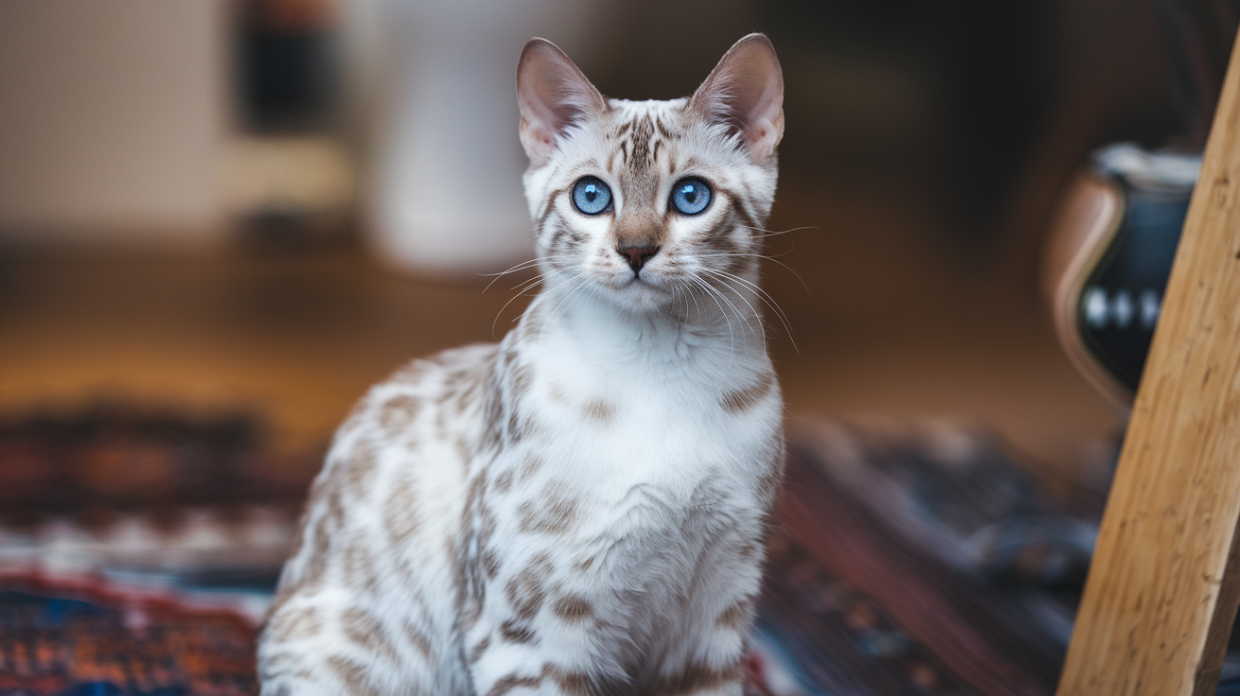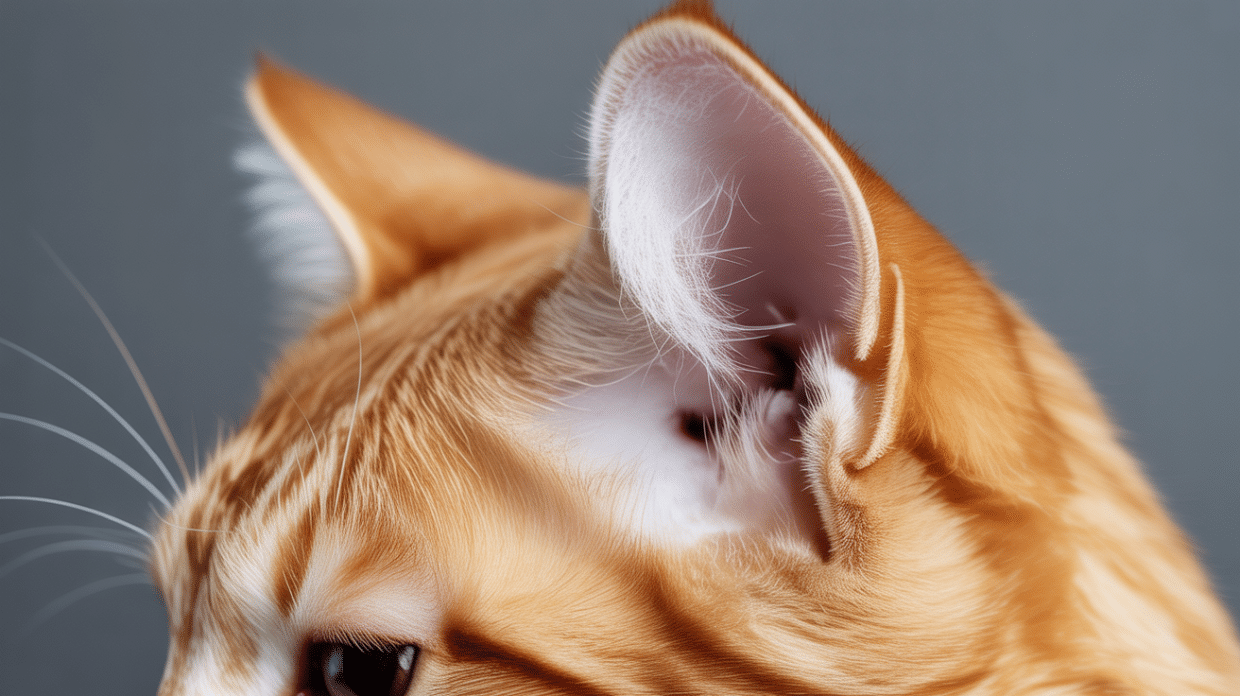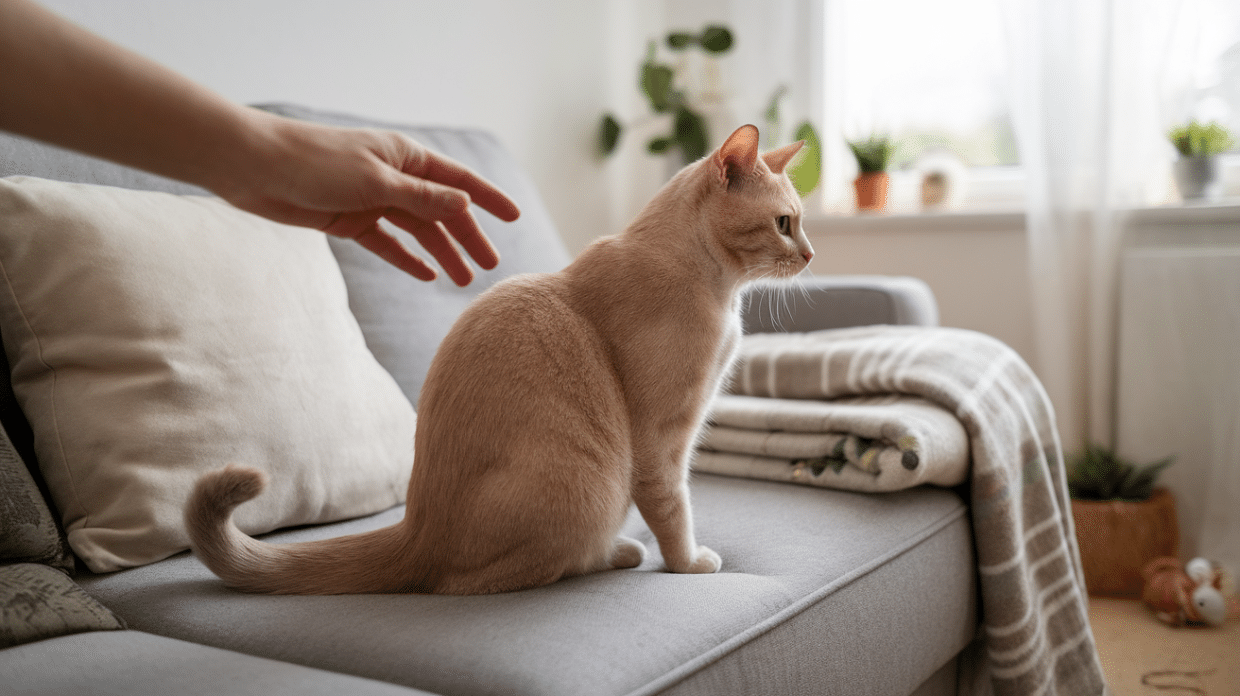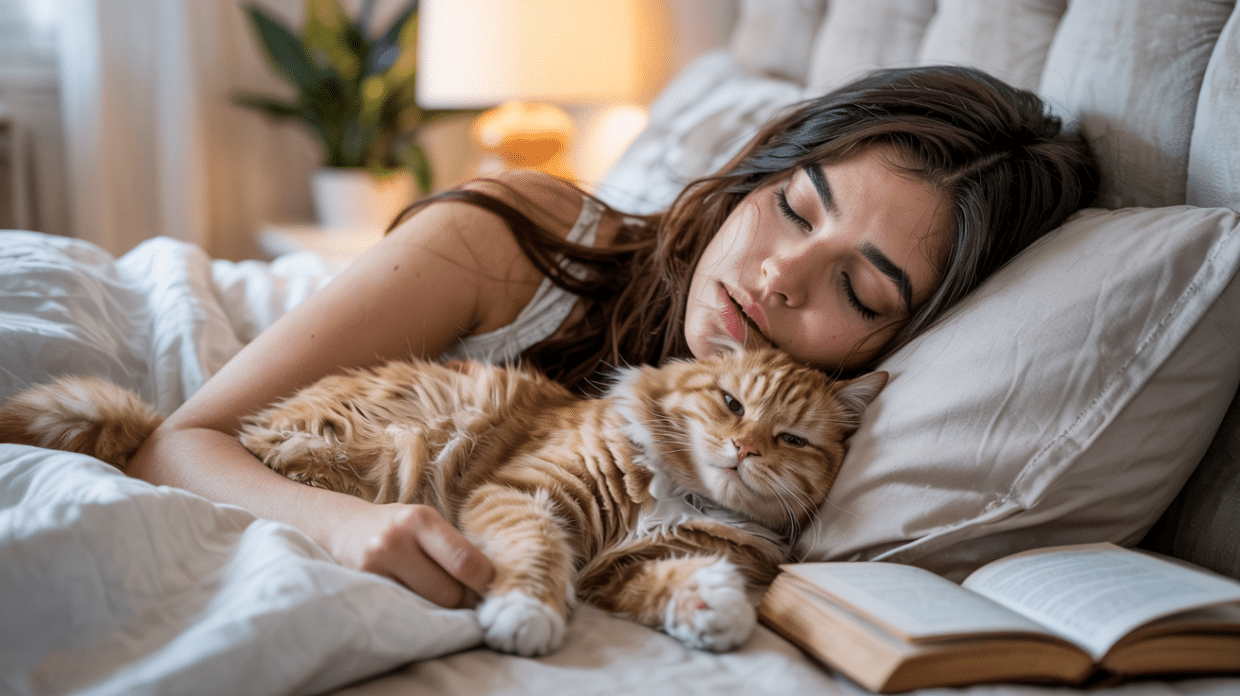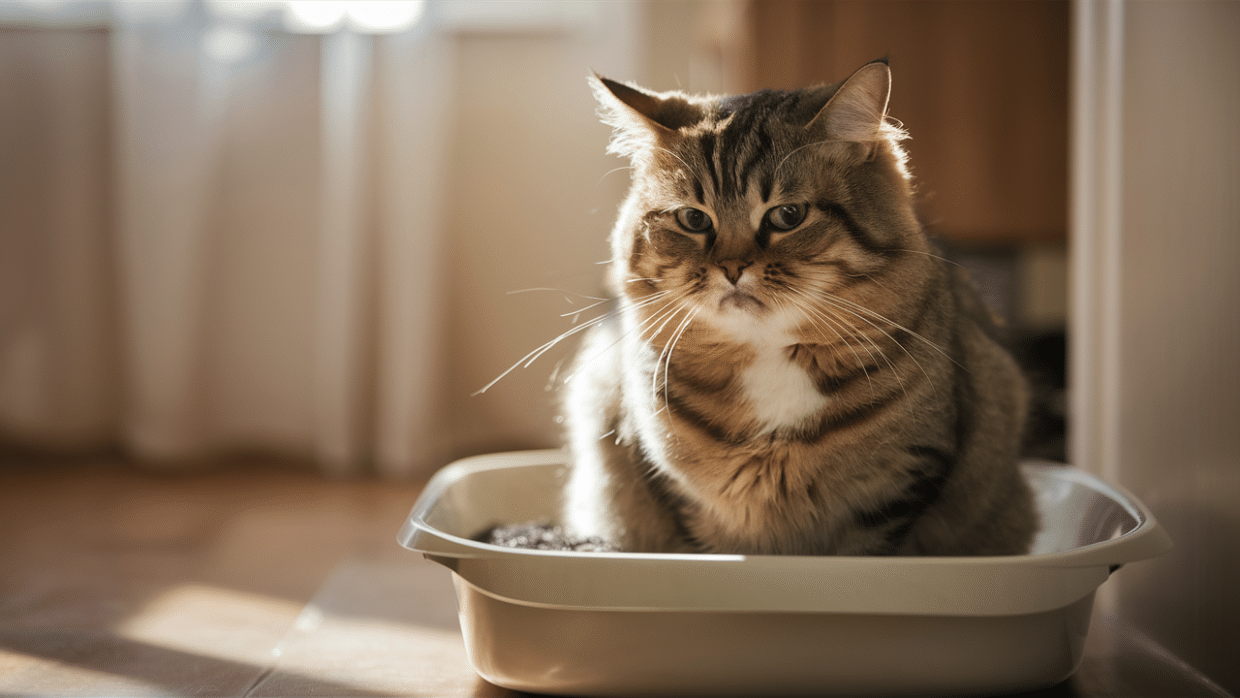Snow Bengal cats look like tiny snow leopards, and they’re just as eye-catching. If you’ve ever wondered about owning one, you’re not alone.
Many people are drawn to their wild beauty but aren’t sure what it takes to care for them. Are they good with kids? Do they need special treatment?
This guide will answer all your questions. You’ll learn about the different types of Snow Bengals, their personality, their care needs, and what to expect before bringing one home.
No matter if you’re a first-time cat owner or already have pets, this post will help you decide if a Snow Bengal is the right fit. Read on to learn about the unique traits that make these rare cats so special.
What is a Snow Bengal Cat?
A Snow Bengal is a type of Bengal cat with a white or cream coat and dark markings. It looks like a small wildcat covered in snow.
They have the same body shape and playful personality as regular Bengals but come in lighter colors.
These cats first appeared in the 1960s when breeders crossed wild Asian Leopard Cats with domestic cats. Some kittens with pale coats became the first Snow Bengals.
Major cat groups like The International Cat Association fully recognize Snow Bengals. Since 1991, they’ve been allowed to compete in cat shows alongside brown Bengals.
Their unique look and wild charm make them stand out in the Bengal family.
Snow Bengal’s Compatibility with Families and Children
Snow Bengals can be great with families and kids, especially when raised in a loving home.
They come in three coat types, Seal Lynx Point, Seal Mink, and Seal Sepia, but all share the same friendly, playful Bengal personality.
These cats are full of energy and love to play, which makes them a good match for active kids. Just make sure children learn to handle them gently.
Snow Bengals may look wild, but they’re smart, social, and enjoy being part of family life. Some can even learn simple tricks or games.
They don’t need special care, just what any cat needs. With early socialization and attention, they become loyal, fun, and loving pets.
Types of Snow Bengal Cats
Snow Bengal cats come in three main types, each with its own special look and features.
Understanding these different types can help you know what to expect if you’re thinking about getting one of these cats.
1. Seal Lynx Point Snow Bengals
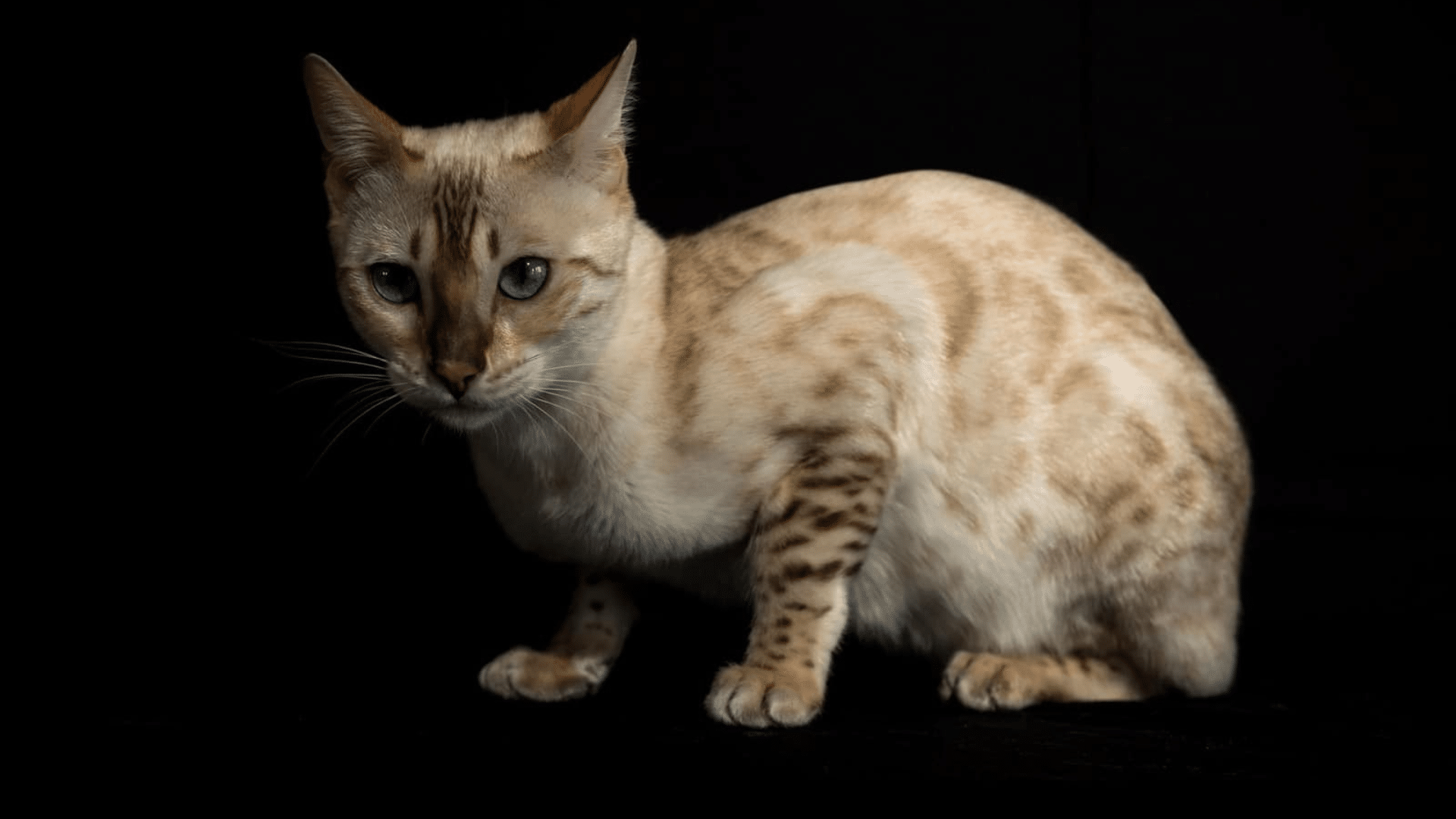
Seal Lynx Point Snow Bengals have a white or cream-colored coat with seal brown markings.
These cats are born looking almost completely white, with their markings becoming clearer as they grow older.
What makes Lynx Points stand out is their striking blue eyes. They are the only type of Snow Bengal that keep blue eyes into adulthood.
Their pattern becomes more visible over time, with darker markings on their face, ears, legs, and tail.
The contrast between their light body and darker points creates a look similar to Siamese cats but with the added Bengal spots or marbled pattern.
2. Seal Mink Snow Bengals
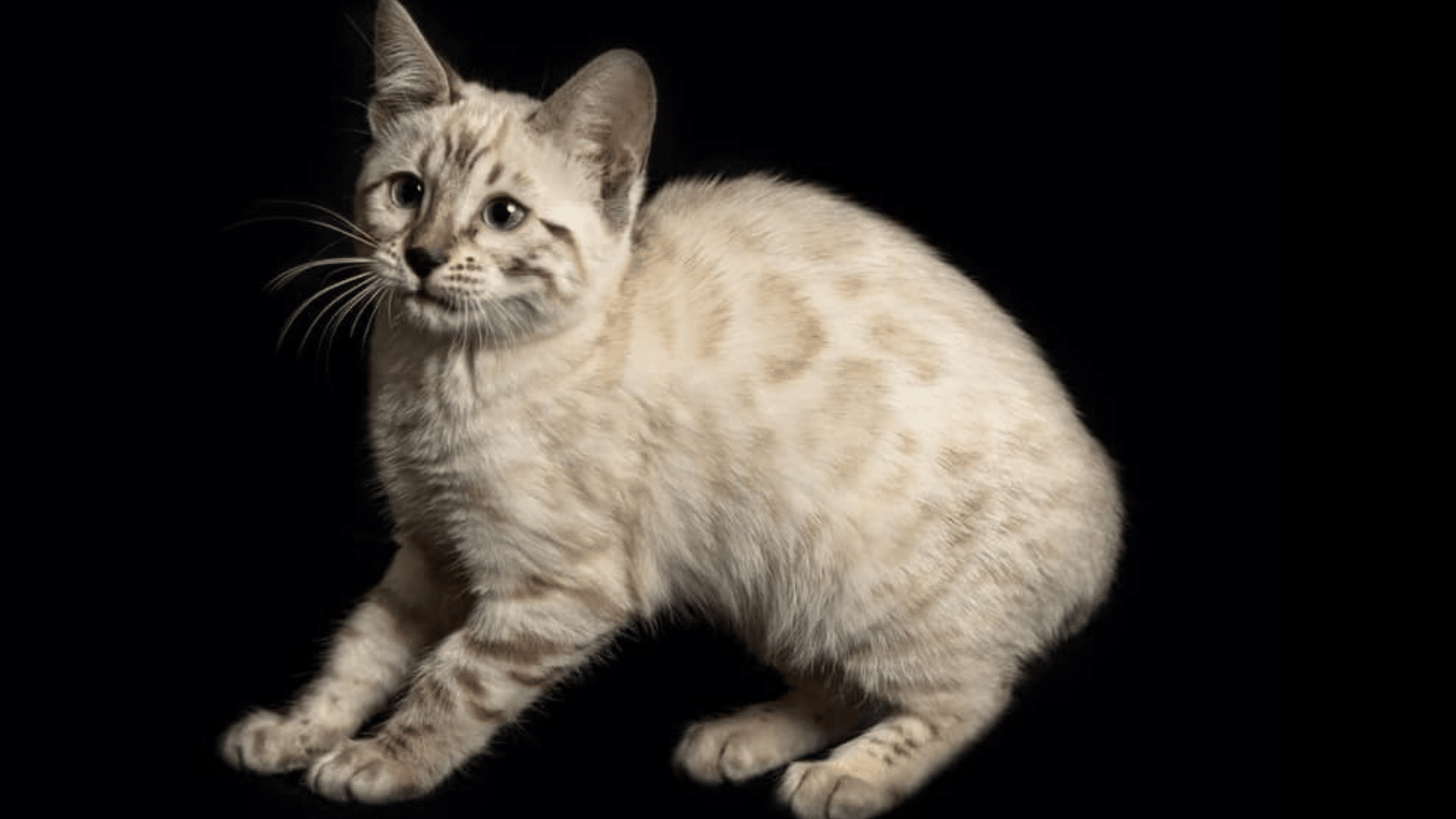
Seal Mink Snow Bengals have a light beige or ivory coat with medium brown markings. They are born with some visible pattern that gets stronger as they grow.
Mink Snow Bengals typically have aqua to green eyes, which helps set them apart from the blue-eyed Lynx Points.
Their coat color is darker than Lynx Points, contrasting their spots or marbled patterns more. They look between the light Lynx Points and the darker Sepia Snow Bengals.
3. Seal Sepia Snow Bengals
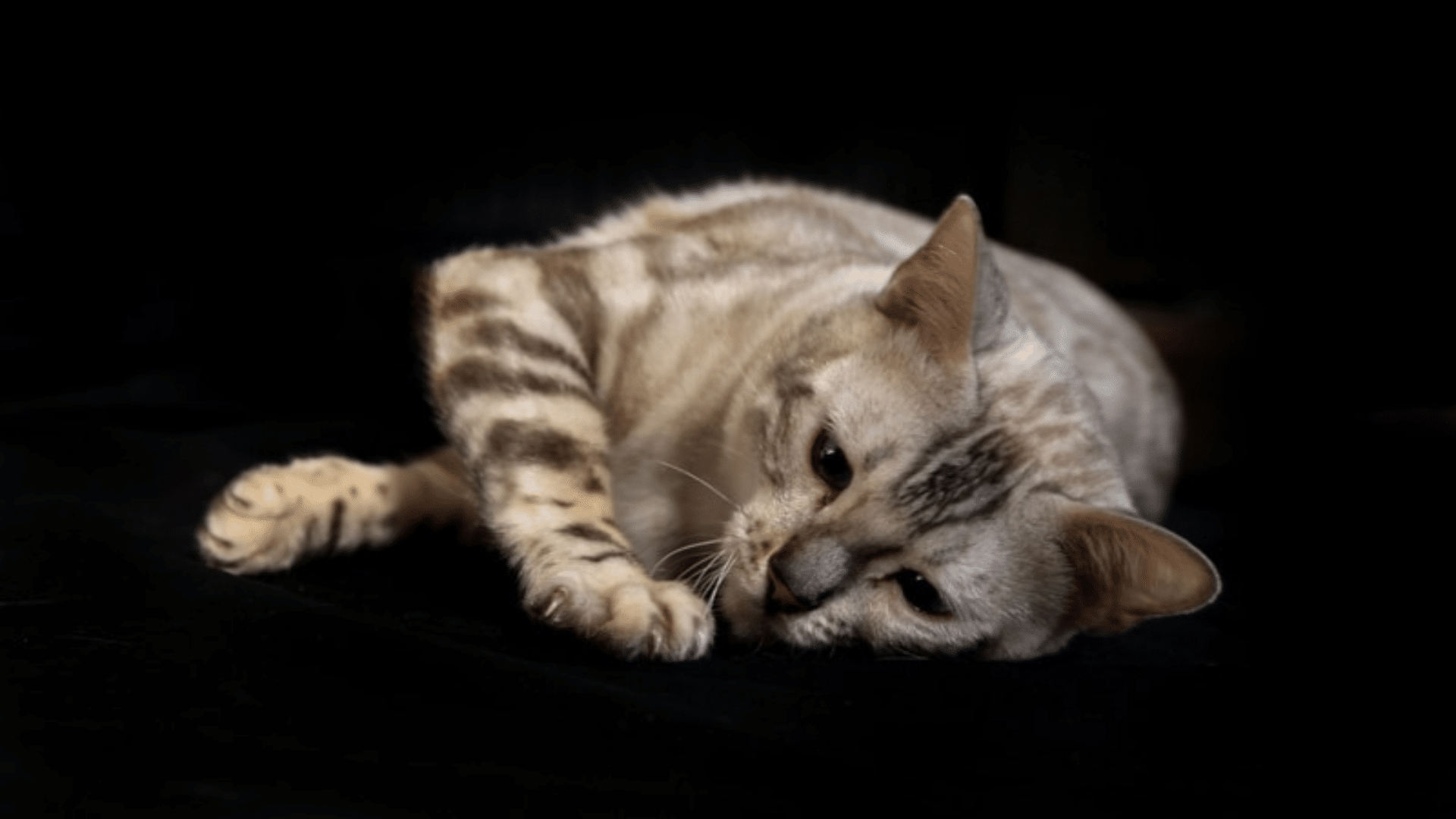
Seal Sepia Snow Bengals have the darkest coat of all Snow Bengal types.
Their base color is ivory to light tan, with dark seal brown markings that create a strong contrast on their jacket.
These cats have gold to green eyes, never blue.
Sepia Snow Bengals are born with a well-defined pattern, so you can see what they’ll look like more clearly as kittens.
Their darker coloring makes their wild-looking spots or marbled patterns stand out dramatically against their light background.
Each type of Snow Bengal can come in spotted or marbled patterns, giving cat lovers options to find the perfect Snow Bengal look they love most.
Snow Bengal Genetics
The beautiful light coat of a Snow Bengal is due to special genes that affect color. These genes work differently from those that create the normal brown Bengal color.
Snow Bengal cats get their unique color from recessive genes. Recessive means both parents must pass the gene to their kittens for the trait to appear.
A cat might carry these special color genes without showing them, then pass them to babies who might show the trait if the other parent also passes the same gene.
Each of the three Snow Bengal types comes from different genes:
- Lynx Point Snow: Comes from two copies of the colorpoint gene (like in Siamese cats)
- Mink Snow: Comes from one copy of the colorpoint gene and one copy of the sepia gene
- Sepia Snow: Comes from two copies of the sepia gene (from Burmese cats)
Breeders must plan carefully when creating Snow Bengal kittens. If both parent cats are already Snow Bengals, all their kittens will be Snow Bengals, too.
For example, if a Mink Snow Bengal mates with another Mink Snow Bengal, all their kittens will be Mink Snow Bengals. The kittens will be mixed if the parents are different types of Snow Bengals.
Physical Characteristics
Snow Bengal cats are medium to large. When fully grown, they usually stand 13–16 inches tall and weigh between 8 and 17 pounds. Males are often larger and more muscular than females.
Their coat is short, thick, and incredibly soft, almost like velvet. It doesn’t need much grooming. A weekly brush is enough to keep it clean and shiny.
Unlike many breeds, Snow Bengals rarely need baths since their fur stays in good shape on its own.
These cats come in two main coat patterns:
Spotted: With bold spots, sometimes forming rosettes (a spot inside a spot)
Marbled: With swirling, flowing patterns across the body
These markings stand out clearly against their pale background, giving them a wild and exotic look.
Snow Bengals have a sleek, athletic build. Their bodies are long, with strong legs and a confident stance. You can see their wild roots in how they move and carry themselves. They’re agile, love to jump and climb, and are always ready to play.
Their powerful build isn’t just for looks. It matches their high energy and playful nature, making them one of the most active and striking-looking cat breeds.
Temperament and Personality
Snow Bengals are known for their lively and social personalities. They thrive in an active, engaging environment and need plenty of mental stimulation.
Here’s what you can expect from their behavior:
- They need plenty of playtime and physical activity to stay happy
- Their intelligence ranks among the highest for domestic cats
- They can learn tricks, walk on leashes, and solve simple puzzles
- Snow Bengals quickly figure out how things work in your home
- They need constant mental challenges to prevent boredom
- These cats are very social and want to be included in family activities
- They don’t do well when left alone for long periods
- While not always lap cats, they typically want to be in the same room as their people
- Snow Bengals have an unusual love for water
Snow Bengal Care Requirements
Caring for a Snow Bengal requires providing them with the right food, exercise, and mental stimulation. Understanding their care needs is essential to ensure they thrive in your home.
Here’s what to keep in mind:
Food and Diet Needs
Snow Bengals need a high-protein diet to stay strong and healthy. A mix of wet and dry food works well.
- Feed them twice a day on a regular schedule.
- Some owners try raw diets, but always ask a vet first.
- Make sure they always have fresh water.
- Watch their weight to avoid obesity, especially since they’re very active.
Exercise Requirements
Snow Bengals are highly energetic cats that require plenty of exercise each day. They love to run, jump, and climb, so it’s important to provide ample space and opportunities for physical activity.
A tall cat tree or climbing shelves can help meet these needs. To keep them physically engaged, plan daily play sessions of 20-30 minutes.
Without enough exercise, they can become restless and may develop destructive behaviors. Regular playtime is crucial for their well-being.
Indoor vs. Outdoor Considerations
For safety, it’s best to keep Snow Bengals indoors. Outside, they face dangers like cars, predators, and disease.
- If you want to give them outdoor time, try a safe catio (cat patio).
- Some can be leash-trained for supervised outdoor walks.
- Never let them roam freely outside.
Mental Stimulation Needs
Snow Bengals are very intelligent and require mental stimulation to stay happy. Puzzle toys, interactive games, and hide-and-seek activities are great ways to challenge their minds.
You can also rotate their toys to keep them engaged. Some Bengals enjoy watching bird videos or playing with water, like dipping their paws in sinks or bathtubs.
Without proper mental stimulation, Snow Bengals can become bored and engage in destructive behavior, so it’s vital to provide them with stimulating activities every day.
Training Possibilities and Benefits
Snow Bengals are highly trainable and can learn a variety of tricks. With patience, they can be taught to fetch toys, follow basic commands like “sit,” and even walk on a leash.
Clicker training is particularly effective for them, as it rewards good behavior and reinforces learning. Training not only helps keep their minds sharp but also strengthens the bond between you and your cat.
Start training early to take advantage of their eagerness to learn and develop good habits.
Health Factors to Consider
Like all cats, Snow Bengals have specific health considerations that need to be monitored. Regular vet visits and preventative care are important for maintaining their health.
Here are some health factors to keep in mind:
Typical Lifespan of Snow Bengal
Snow Bengals typically live 12-16 years, but good care can extend their lives. Their lifespan is similar to that of other Bengal cats.
Proper diet and exercise help them live longer, and regular vet visits can catch issues early.
Common Health Issues to Watch
Snow Bengals may develop heart issues. Watch for signs of heart disease as they age. Some get hypertrophic cardiomyopathy (HCM).
Eye problems can occur in some cats. Digestive issues might appear in certain lines. Progressive Retinal Atrophy (PRA) may also affect some Bengals.
Monitor for changes in energy or behavior. Early detection often leads to better outcomes.
Preventative Care Recommendations
Schedule yearly vet checkups. Vaccinations should be kept current. Dental care prevents many health issues. Brush their teeth regularly, if possible.
Keep them at a healthy weight. Spay or neuter unless breeding is planned. Check ears weekly for signs of infection.
Watch for hairballs, especially in long-haired varieties. Use monthly flea and parasite prevention.
Importance of Finding Reputable Breeders
Good breeders test for genetic problems. They screen for HCM and PRA. Ask to see health clearances for both parents.
Avoid breeders who don’t allow home visits. Good breeders answer all health questions openly. They provide health guarantees in writing.
Cats from quality breeders often have fewer health issues. If possible, meet the kitten’s parents. Check breeder reviews and references.
A higher initial cost usually means fewer vet bills later.
Conclusion
Snow Bengal cats are more than just beautiful. They’re active, smart, and full of personality.
With the right care, they make loving companions and thrive in busy homes. Their unique coat types and playful nature set them apart from other breeds.
Before bringing one home, make sure you’re ready for a cat that needs attention, playtime, and mental stimulation. In return, you’ll get a loyal, eye-catching pet that’s sure to turn heads.
If you enjoyed learning about Snow Bengals, don’t stop here. We’ve got more helpful guides on cat breeds, care tips, and fun feline facts.
Check out other blogs on our website to keep learning and find the perfect pet for your lifestyle.

